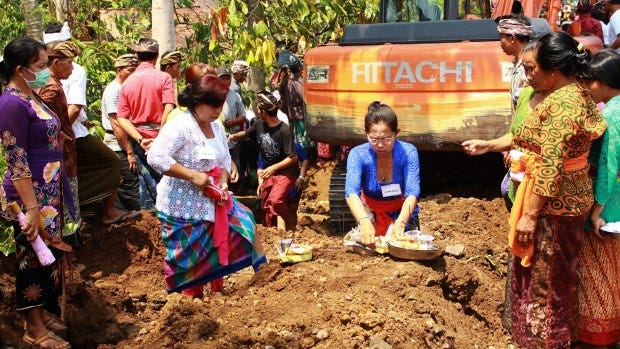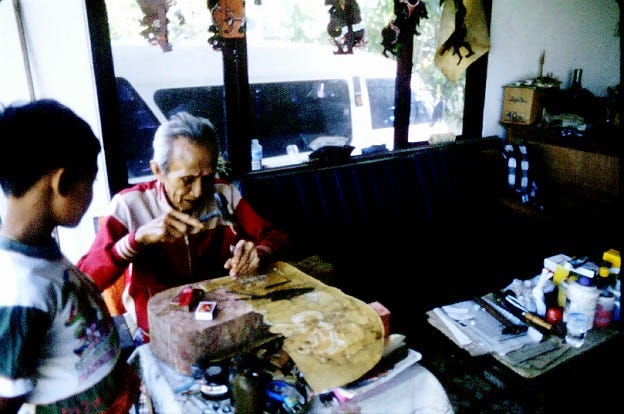
When I was a child, we would travel to Indonesia, where my father conducted his research. It was the time of Suharto. My dad’s research mostly took place in Bali, where the regime was careful to limit its presence; they didn’t want to spook the tourists, you understand. But still, the signs were there, if you knew how to look. Every once in a while, a black army truck, filled with soldiers; your odd military checkpoint; and, always, Indonesian friends and peers of my father who were critical of the regime, and afraid. Viscerally afraid, the kind of fear that shakes you when you observe it as a child. It was difficult for Western academics, too, though they obviously faced far less threat. No one wanted to be a collaborator, and among the many I met, none had anything but disgust for the Suharto regime. But to complain publicly risked being barred from the country, which did no good for anyone. I believe the tension haunted my father.
When I was thirteen I took a trip with him there, just the two of us. First we had attended a conference in Sydney, where I got to interact with many of those academics as well as a couple of dissidents who couldn’t risk returning. After that, we spent ten days or so in Bali. My father was always different, on those trips, somehow healthier despite endlessly smoking spiced Indonesian tobacco. The island suited him. We were staying in the village where he had, decades earlier, first learned Wayang Kulit under his teacher Pak Rajeg, and where he had forged a lifelong brotherhood with Rajeg’s son, Sumandhi. One night, my father woke me gently and led me outside, where one of his Balinese friends waited for him. The village is well inland, and few tourists ventured that far, at least at that time. We got in a bemo and drove for awhile, and when we got out, my father led me by hand in the moonlight to a mass grave.




